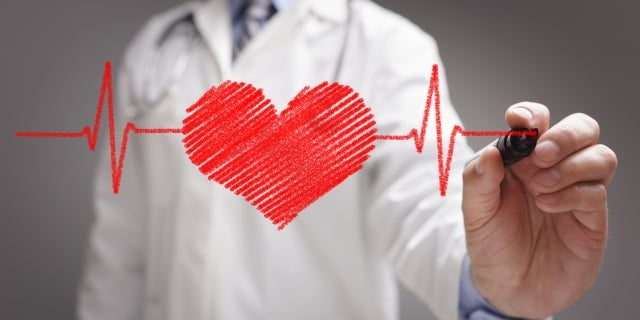February 11-17 is Cardiac Rehabilitation Week. This is a week where we recognize the contributions of the staff in the Cardiac Rehabilitation Center at Oklahoma Heart Institute. These staff members work with patients to help reduce the effects of heart disease. To learn more about the cardiac rehabilitation program, we spoke with Tom Guhr, health educator with the Weight Loss & Wellness Center at Oklahoma Heart Institute.
“Cardiac rehabilitation is a monitored exercise program,” explained Guhr. “There are specific diagnoses that take place in order for a patient to be eligible for to cardiac rehab including heart attack, a stint, bypass surgery, valve repair or replacement, heart failure, heart transplant and stable angina. Patients are automatically referred to cardiac rehab if their cardiologist has determined they experienced one of the diagnoses or if they have gone to the hospital and had an intervention. Our staff that consists of registered nurses, an exercise physiologist, a registered dietitian and a behavioral health specialist. We take each referral and reach out to the patient to enroll them in the cardiac rehab program. With Hillcrest Medical Center being where the majority of the interventions take place, we send a number of qualified patients out to area cardiac rehabs depending on where they live. They still get the same quality care, but are able to go to a location that’s more convenient for them.”
The cardiac rehab program is broken up in to several comprehensive parts. “One part of the program consists of individualized treatment in terms of exercise and care, and the other consisting of educational opportunities” Guhr stated. “Everyone that comes to the program receives a consult with our dietitian to discuss healthy eating, as well as a consult with our behavioral health specialist to talk about any kind of stressors or anxiety that they have been experiencing following their event. Patients can also attend classes that are taught by our staff where we discuss things like specific exercises, how the heart works and how the different medications they are taking relate to their recovery.”
Following their event or intervention, patients attend cardiac rehab for approximately three months. “The sessions are three times a week for 12 weeks, totaling in 36 sessions, with the majority of patients completing all 36,” said Guhr. “The thing that really sets this program apart, if you think about the events that these patients have gone through, is that they are often very hesitant to do anything physical that would cause their heartrate or blood pressure to increase. This might have been what they were doing when they had their event, so there could be some hesitation to get back into things.”
For most, cardiac rehab is a crucial recovery step. “Cardiac rehab plays a big role in terms of recovery and getting patients back to the quality of life they want to experience or what they had prior to their event,” stated Guhr. “We have nurses and registered staff members that monitor them while they are here going through the specific exercise treatments. We start them off slowly and stretch them out really well. We slowly increase them to a point where they are really pushing themselves, based on the individual. Every treatment plan is a bit different.”
The final phase of cardiac rehab is all about patient maintenance. “The end of the program is the maintenance phase of cardiac rehab,” Guhr explained. “Since cardiac rehab is located in our hospital’s fitness center, patients roll over into becoming members of the fitness center. They come back and exercise on a routine basis, which they really enjoy because they are familiar with the setting and the staff. If they have any questions or want to have their blood pressure taken, our team is there to assist.”
There are many benefits to cardiac rehab. “Education is a major benefit of the program,” stated Guhr. “Many don’t know the right way to eat or the nutrition factors that go into heart health. It’s important to know the amount of fat you should have in your diet, as well as the amount of protein, sodium and carbohydrates. While it’s okay to indulge every now and then, we encourage an overall lifestyle change.
One of the biggest takeaways patients receive from cardiac rehab is their resilience to bounce back. “We want to help our patients get back to the level of daily living that they experienced before they had their event,” said Guhr. “This event doesn’t have to be one that limits them for the rest of their lives. They have the opportunity to turn that around and take control of their health. We want to prevent the likelihood of a recurring event. The time to be proactive is now.”
For more information regarding the Cardiac Rehabilitation Center at Oklahoma Heart Institute, please call 918-592-0999.

